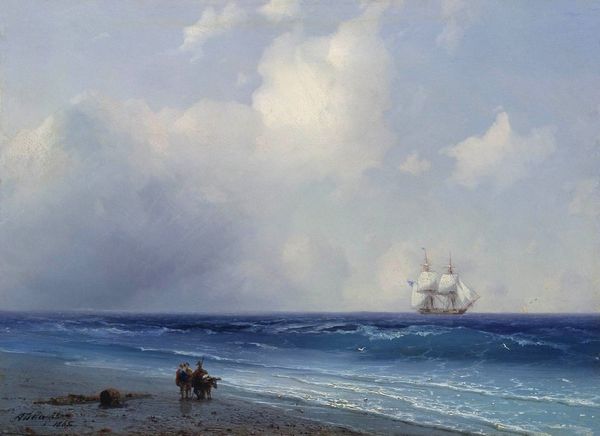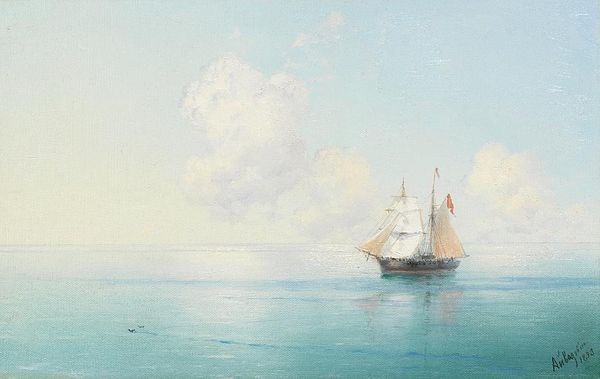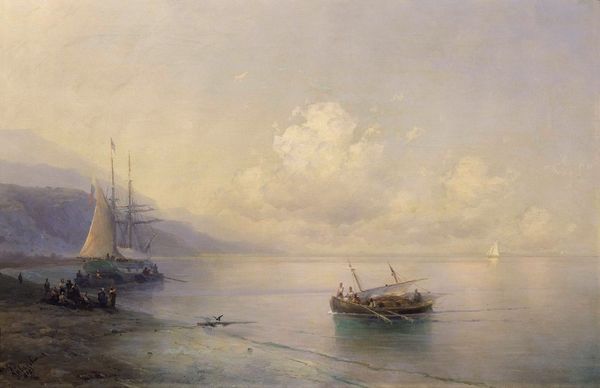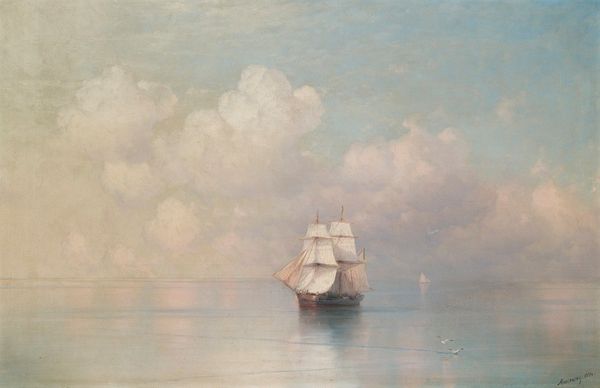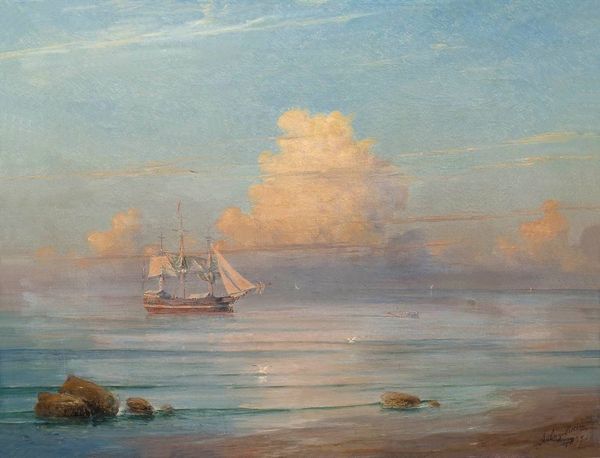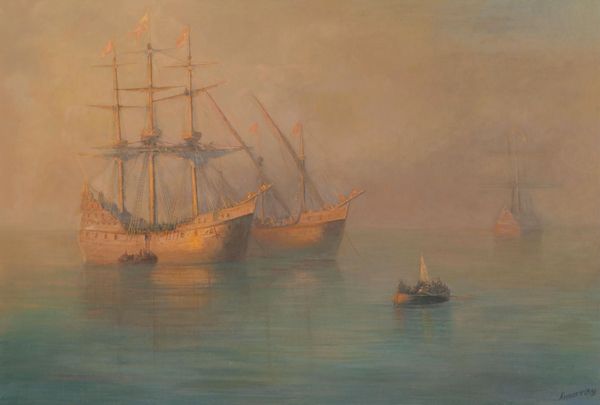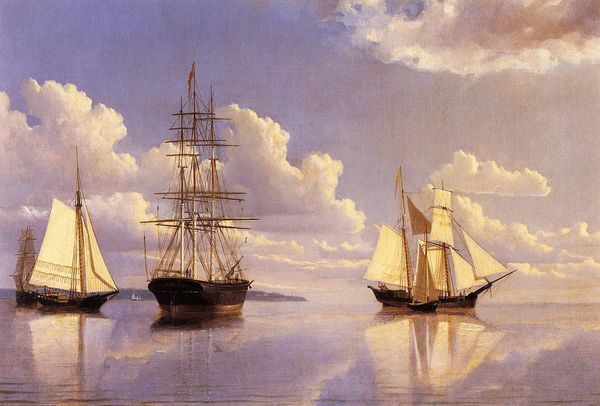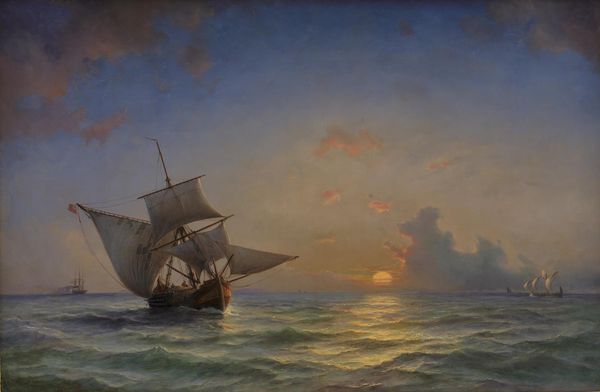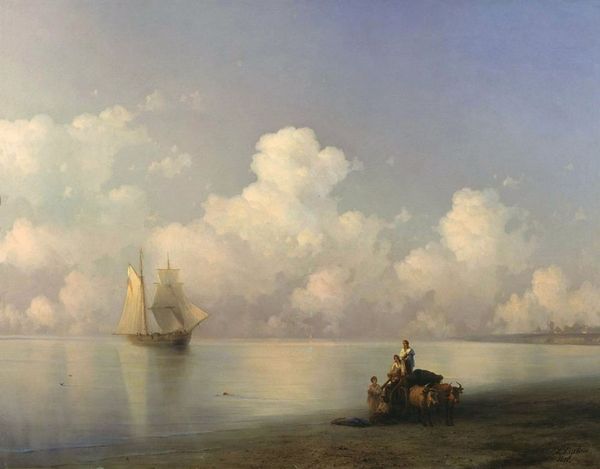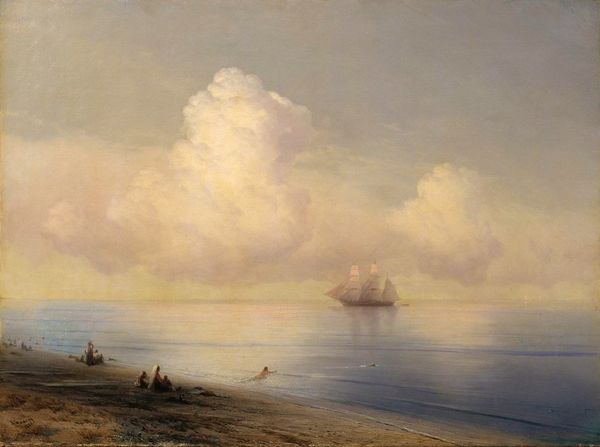
painting, oil-paint
#
painting
#
oil-paint
#
landscape
#
figuration
#
oil painting
#
romanticism
#
realism
Copyright: Public domain
Curator: This is “Calm Sea in the Early Evening” by Ivan Konstantinovich Aivazovsky. The medium is oil paint, a familiar one for the artist. Editor: My first impression is of muted tranquility, with that subtle tension the artist conjures in the shifting blues of sea and sky. And of course, a Romantic sensibility in the dramatic lighting. Curator: Yes, the light here plays a huge role, creating depth, mood, and defining form, characteristic of Aivazovsky’s best works. The scene depicts a small gathering of figures on the shoreline and a distant ship bathed in soft, diffused light, reflecting a sense of peace and solitude. It feels, as do so many of his paintings, as though you’re intruding upon a very personal, solitary moment. How might his position as court painter and champion of Russian nationalism play into that feeling of ‘place’? Editor: Looking at the means, oil paint offered Aivazovsky unmatched opportunities to capture atmospheric conditions, his blending and layering techniques evoke the shimmer of water, and luminosity overall, with tremendous nuance. The impasto on the clouds almost hints at sculptural mass, emphasizing his masterful manipulation of materials to create illusionistic depth. And speaking to your other point, consider the materials themselves – who provided them, what did the accessibility of certain pigments at that moment say about artistic creation under particular forms of patronage? Curator: The composition draws you in, doesn't it? From the quiet foreground, with the small group of people, to the expanse of water and sky, and ultimately out toward that single ship. It speaks to the Russian identity tied so closely to its maritime history. I think the way that narrative connects the land, people and then out to sea reflects that. The seascape, more broadly, became a symbolic stage for political narratives of expansion and power during that time. Editor: I agree. It would be really insightful to dive into archival records – ship manifests, cargo lists from ports, records of painter's guilds that could provide additional layers to understanding how raw materials and labor converged in producing paintings such as this. The consumption patterns alone, tied as they were to colonial trade, offer so many clues. Curator: These paintings can seem uncomplicated on the surface, but really the artistic, cultural and political context embedded in them is vast. Editor: Absolutely. To really understand paintings like these, we need to examine everything—from pigment to power dynamics. It definitely gives a richer view of this artistic achievement.
Comments
No comments
Be the first to comment and join the conversation on the ultimate creative platform.


